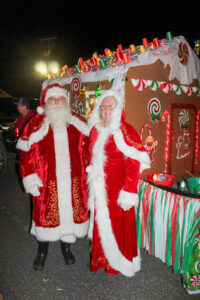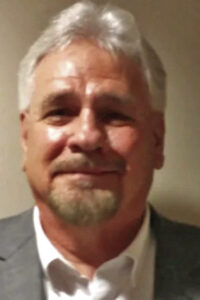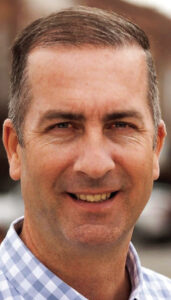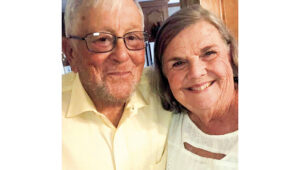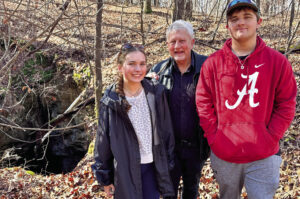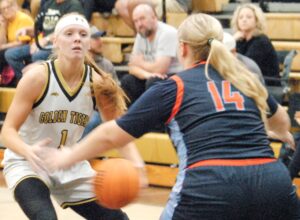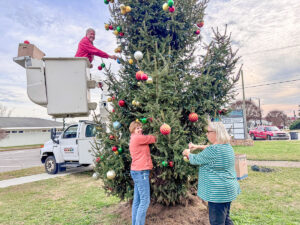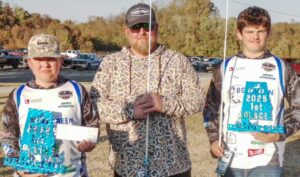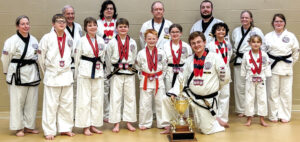Making sure the shoe fits: Farrier biz keeps hooves happy
When a horse needs new shoes, a trip to the store doesn’t solve the problem. Instead, a farrier comes to them to take care of the issue and make sure everything is done right. “I became a farrier out of necessity,” explained Joseph Baldwin, who lives in Atwood.
“There’s not a lot of old school farriers around anymore,” he explained. “Some have just become unable, and others have sadly passed on. Through the years, I’ve seen several enthusiastic young’uns start in the spring and quit by the time summer rolled around, but there’s a handful that held on, and they are getting the job done very well … I hope some young gal or guy that reads this becomes interested in becoming a farrier and sticks with it.”
Baldwin said he has often wondered how many horses he has shod and how many nails he’s driven into a hoof. “If I had to estimate a number, I’d say somewhere in the neighborhood of 10,000 horses and over a quarter million nails,” he ventured. He said his love for horses started when he was young and has only continued to grow over the years. “I’m not sure what drew me in initially – just a kid with big ideas, I guess, but it just always seemed natural to work with horses.”
Baldwin said he remembers riding his Great-Uncle Howard’s mule when he was 7-8 years old, and he also remembers the first horse that was officially his – “a short-legged, one-eyed, pot belly, long-haired stubborn Welch pony that had a limp.”
He recalls his favorite horse, “a painted quarter horse stud named Q-ton” who he rode for about 25 years. “We covered a lot of miles and visited different states during his lifetime,” Baldwin said. “I miss him from time to time. I bought him as a yearling and was able to train him myself.”
He currently has three horses, all mares, and a donkey. His horses include a Palomino named Piper, a Sorrel named Bullet and a paint named Patty Bo. The donkey is called Hank and has his own fanbase on Facebook. Baldwin said a lot of folks stop by to pet him when they see him close to the road.
“My horses are just ‘pasture ornaments’ at this time,” Baldwin explained. “I don’t make the time to ride anymore, and I don’t take them to shows. I’m actually having the three mares bred this year, so we’ll see what that turns into in the future.”
Baldwin said he has a “the more the merrier” attitude when it comes to horses. That mindset helped lead to his foray in the farriery.
“I acquired too many horses when I was young and before I had a ‘job’ to help sustain that passion,” he explained. “I was in my late teens when I started buying and rehoming horses – any horse I could get my hands on.” He said he wound up with “at least a dozen or more” within a very short period of time. “Eventually, I had to contact a farrier to come out and tend to all of them, and the resulting bill for his work was way more than I expected.”
Baldwin said his mother helped him with the cost and then told him he needed to get his own tools and learn the trade so he wouldn’t have to pay a farrier again. “She helped me get my first farrier tools, which I still have to this day,” Baldwin said. “I’ve owned many horses through the years and worked for the public as a farrier for over 30 years. I love those animals. Just something about them that gets me.”
Baldwin said he started to “learn a lot pretty quick” by working on his own horses and watching other farriers. He soon began to work for local horse owners.
He said horses that have never been shod can sometimes be challenging, noting tying techniques and calming medicines can help in these situations. “Each horse will have a unique temperament. There are horses that are always tough to work with and others that are always easy, and then there’s those bipolar critters that wake up and roll with whichever way the wind is blowing. Farriers love those. Keeps me on my toes.”
Baldwin said the differences and challenges are all part of what keeps the job interesting for him.
“Some of the horses have great hooves and are easy to work with but others not so much,” he said. “I’ve always compared horses and horse hooves to snowflakes – from a distance, they are all the same, but up close, they are definitely unique.”
Baldwin said each horseshoe typically has to be shaped to fit each hoof, noting there are many different sizes, types, weights and thicknesses of shoes. “The nails that are used to hold the shoes in place can also be different types and sizes,” he added.
“I guess I’d say it’s kind of an art because each farrier has their own way of shoeing in an effort to achieve the same goal,” Baldwin added. “There was a time that I worked with or rode a horse six or seven days a week, sometimes for fun and sometimes for working cattle – which was fun also. Sometimes I’d ride for a customer whose horse I was breaking, but Father Time has slowed that down significantly.”
Baldwin said being a farrier has allowed him to meet “many new folks” and develop friendships that continue through the present day. “I’ve made many friends throughout the years that I would’ve never known if I wasn’t a farrier,” he explained, “and if any of those new or old friends are reading this, I’d like to say hello and that I hope you are doing well – and if you’re reading this and we’ve never met, I hope to meet you soon.”
And though being a farrier is his primary profession, it’s not his only one.
“I provide musical entertainment in and out of state two to three times a week,” he explained. “I’ve been performing for 20-plus years now. I can’t remember when it started really. I’m also proud to say that I’m currently serving as a commissioner in Franklin County. I think that meeting people through horses and music has helped me as a commissioner. In some crazy way, it all just seems to work, and I thank the Lord for blessing me with these duties.”


